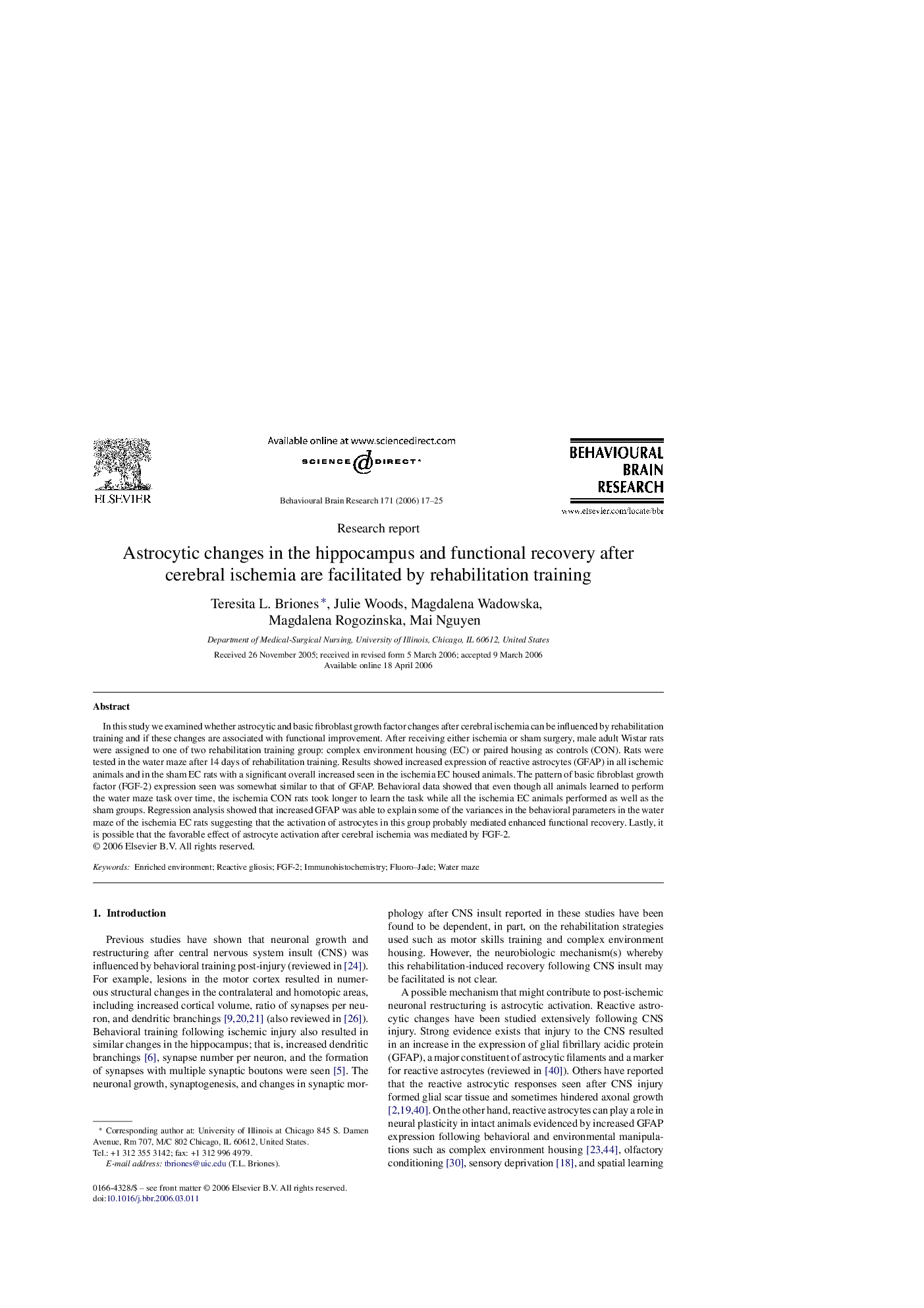| Article ID | Journal | Published Year | Pages | File Type |
|---|---|---|---|---|
| 4316264 | Behavioural Brain Research | 2006 | 9 Pages |
In this study we examined whether astrocytic and basic fibroblast growth factor changes after cerebral ischemia can be influenced by rehabilitation training and if these changes are associated with functional improvement. After receiving either ischemia or sham surgery, male adult Wistar rats were assigned to one of two rehabilitation training group: complex environment housing (EC) or paired housing as controls (CON). Rats were tested in the water maze after 14 days of rehabilitation training. Results showed increased expression of reactive astrocytes (GFAP) in all ischemic animals and in the sham EC rats with a significant overall increased seen in the ischemia EC housed animals. The pattern of basic fibroblast growth factor (FGF-2) expression seen was somewhat similar to that of GFAP. Behavioral data showed that even though all animals learned to perform the water maze task over time, the ischemia CON rats took longer to learn the task while all the ischemia EC animals performed as well as the sham groups. Regression analysis showed that increased GFAP was able to explain some of the variances in the behavioral parameters in the water maze of the ischemia EC rats suggesting that the activation of astrocytes in this group probably mediated enhanced functional recovery. Lastly, it is possible that the favorable effect of astrocyte activation after cerebral ischemia was mediated by FGF-2.
